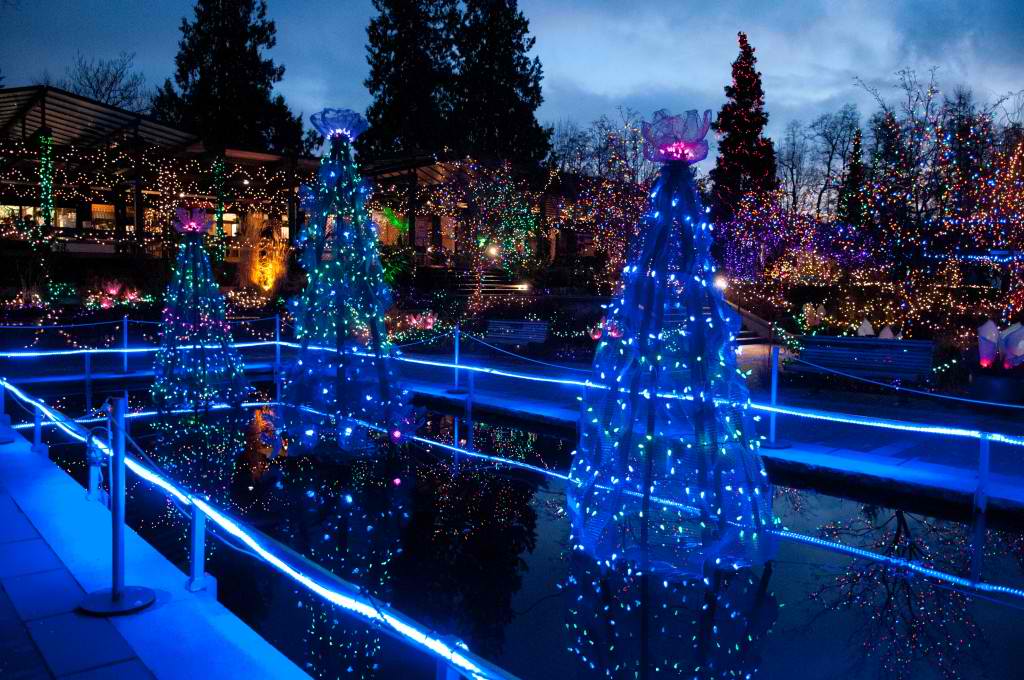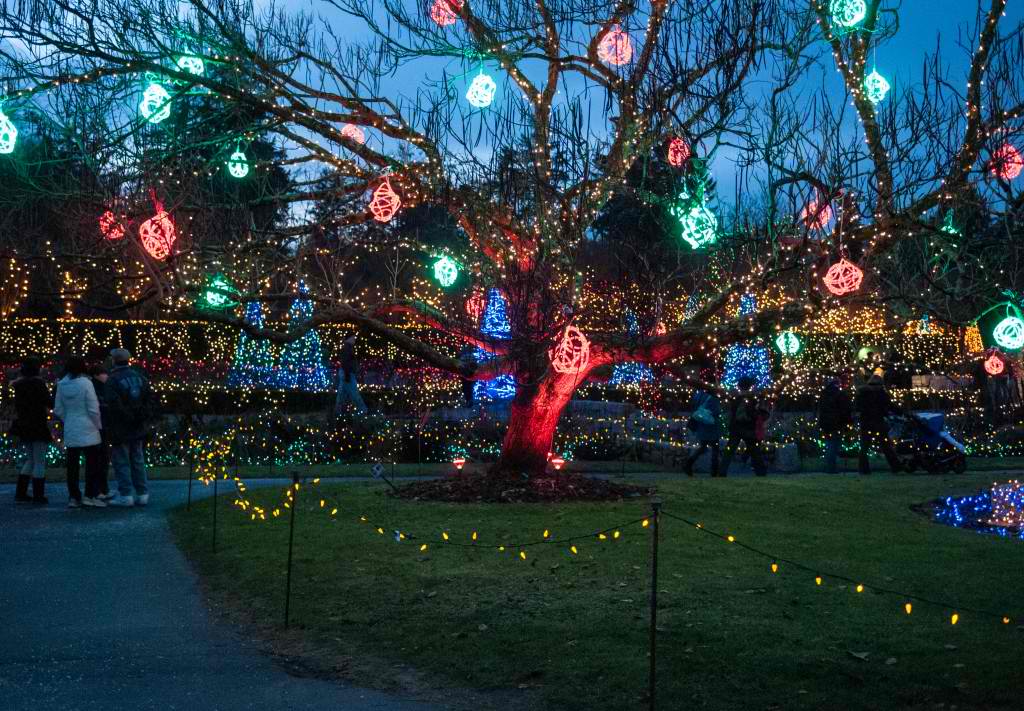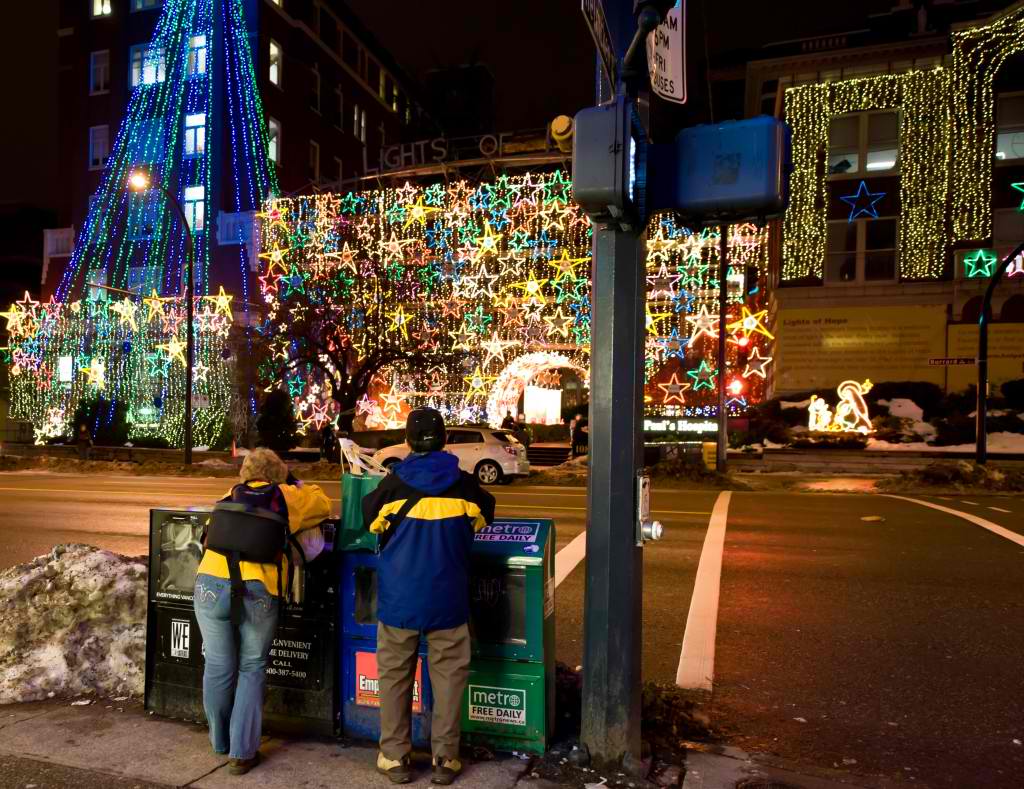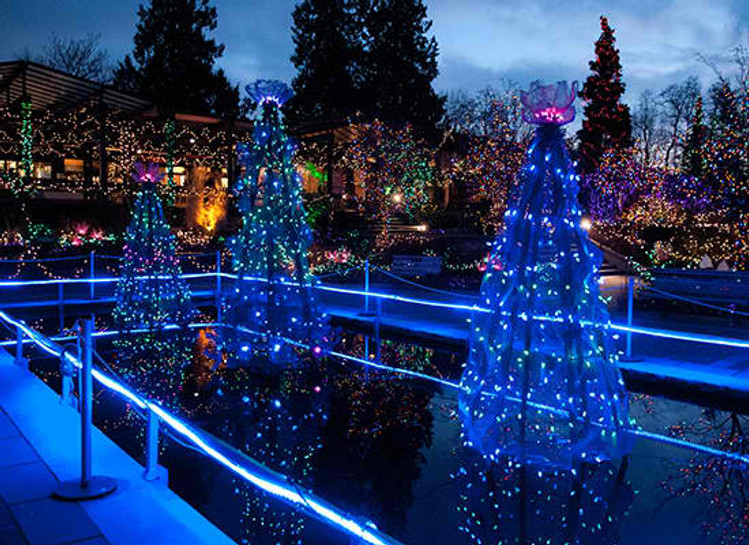First of all you don’t need a high-end digital single lens reflex camera to get great results. You don’t need a flash (I suggest you make sure it is turned off). What you do need to be aware of is the time of day, and consider a bit of advanced planning.
The best approach is to get out and shoot while there is still some ambient light in the sky, after it gets completely dark you either have proper exposure for the lights or the surroundings but not both. There are a few moments where there ambient light balances with the Christmas lights – the challenge is two fold 1. finding that moment in your location and 2. finding the time to get out shoot, which can be a challenge in todays busy world.
I suggest you plan ahead, know where you want to photograph, and get there while there is still plenty of ambient light in the sky. At this time of the year I would suggest between 5:00 PM and 5:20 PM as a good starting point (in Vancouver Van Dusen Garden is amazing but they open at 5:30 pm which is a bit late in the day for best results) but still workable.

What Is Next:
1, Get there early, ahead of the time you have decided is the best time between ambient light and complete darkness. If it is a house and they haven’t turned their lights-on (most people wait until it is completely dark) a knock on the door and a friendly request will most likely get a positive response.
2. Composition is alway important. Include as much of the ambient sky as possible and don’t hesitate to use the twilight left in the sky. Look for framing devices. Try for a reflective foreground and if you have water or snow all the better they can create some great effects with twinkling Christmas lights dancing in the foreground.
3. Take your camera off Auto White Balance and try using the Tungsten setting – this will vary depending on whether the Christmas lights are the newer LED light being used in many locations – experiment and see what you like. The Tungsten setting will add some drama to the twilight (darker blue) sky.
4. Use a tripod or some sort of support to steady your camera. From experience and depending on how you set your ISO you will be shooting between a quarter of a second to a full second at twilight with Christmas lights.
5. Be patient (and stay warm and dry), wait for the light to happen for you. The sweet spot where the balance between ambient light and the Christmas lights converge is worth the wait. What I do is shoot a test shot every minute or so, depending on how early you get started the ambient will dominate but as twilight fades the light will converge into a prefect balance.
Finally, have fun, enjoy the the lights, and most important and enjoy the season….
To re-cap;
1. Timing is everything – don’t be to eager but get there early to set-up (4:30 pm) and don’t be to late 5:20 to 5:30.
2. Set White Balance, I suggest starting with the Tungsten setting.
3. Use a tripod or some method of keeping the camera steady. Try not to shoot above 1600 to 3200 ISO.
4. Using the scene surroundings to enhance and frame the composition and make the lights interesting. Reflects on water or snow can be very effective for your Christmas light shots.


Photos and written by Terry Cioni – education.bccamera.com
Related articles
- Festival of Lights at VanDusen Botanical Garden (emeraldeventsblog.wordpress.com)
- WATCH: Possibly the best home Christmas light show EVER and it’s right here in Oklahoma (kfor.com)
- Light Painting with Christmas Lights (2switchgears.wordpress.com)


